The Travel Sage
Kangaroo Island on Our Own
After spending 7 nights in Melbourne, Australia, we flew to Kangaroo Island. I chose this location because it was as close to the “outback” that we could reasonably get to on this trip. The island is sparsely populated and full of wildlife. After arriving at the tiny airport, I got the impression that most people come by ferry, not airplane. We flew in on a puddle jumper through Adelaide which is the only connecting airport.
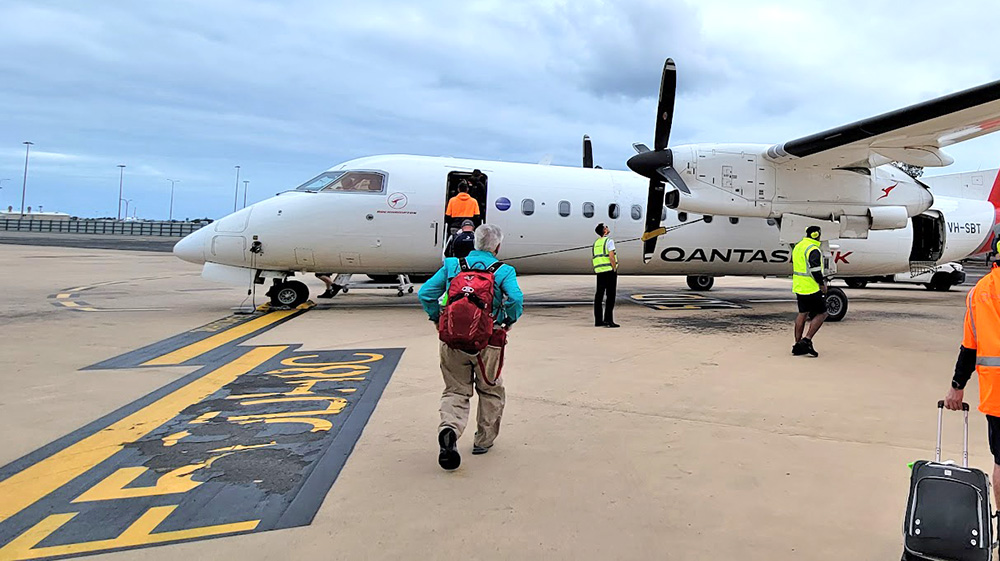
Knowing that my phone may not have any service on this rather remote island, I had planned ahead of time on what we would do until it was late enough for us to check into our Airbnb. We got our rental car at the airport and Mark was the designated driver. This was his first time driving on the wrong side (left) of the road, so it was a bit stressful for him. But we figured if he was going to learn to do this, doing it where there is almost no traffic was a better place to learn than in a city.
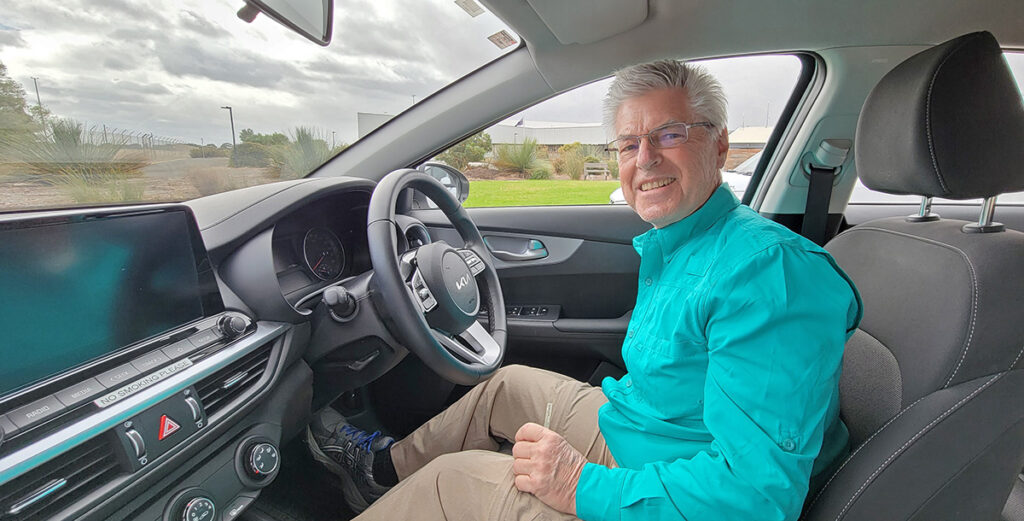
It was a very short drive from the airport to our first stop at Duck Lagoon where we took a short walk along the water in hopes of spotting some birds. We did get two new birds here, but what was more exciting is that I spotted a koala in a tree! I had my long lens with me so I ended getting a very close-up shot.
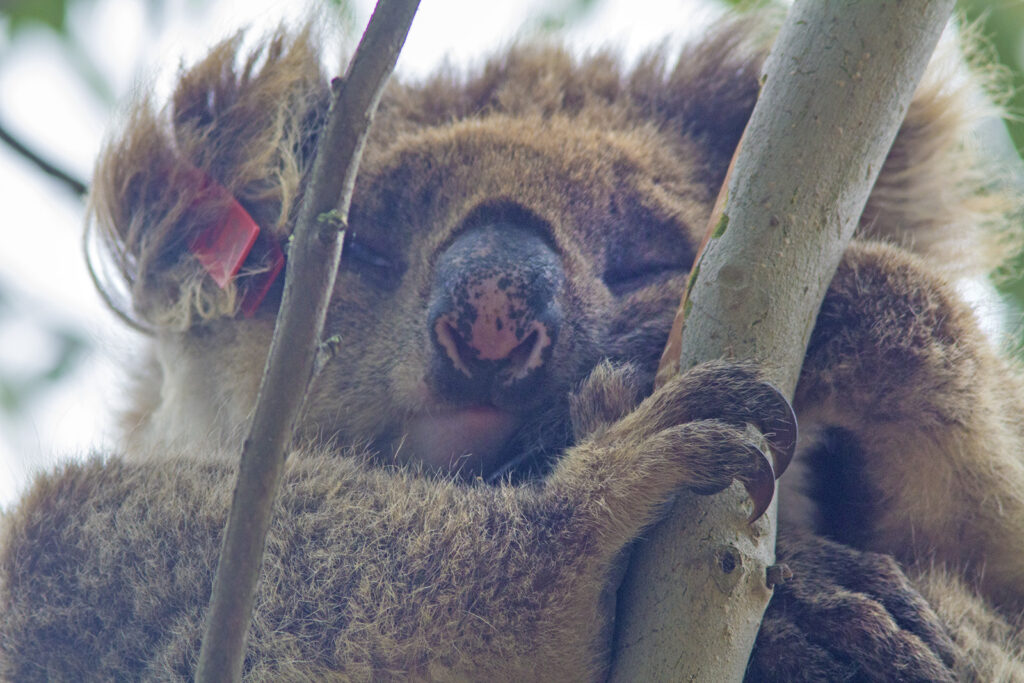
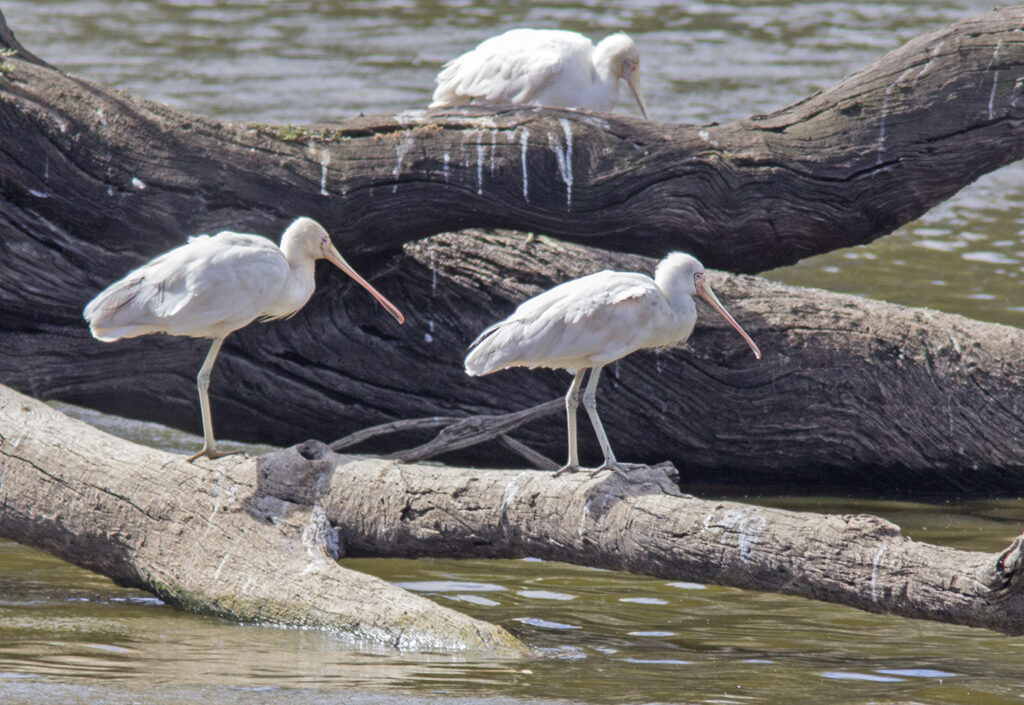
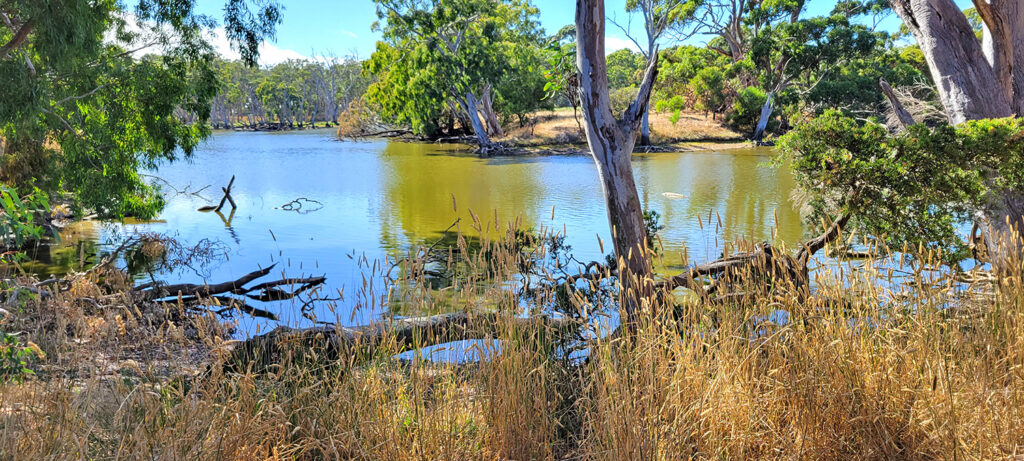
Just as we were finishing our walk, the weather turned strange – it would be sunny one second and then raining the next. The clouds were blowing by so fast we couldn’t really predict what was coming at any moment. We mostly managed to dodge the rain and headed over to a cafe at Emu Bay Lavender Farm for lunch. It was a cute place and the food was great.
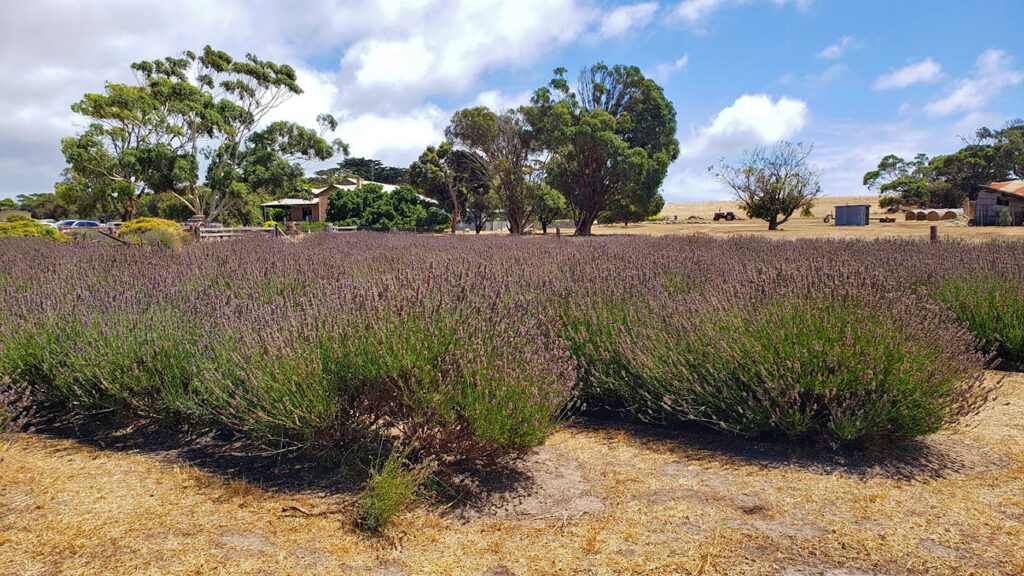
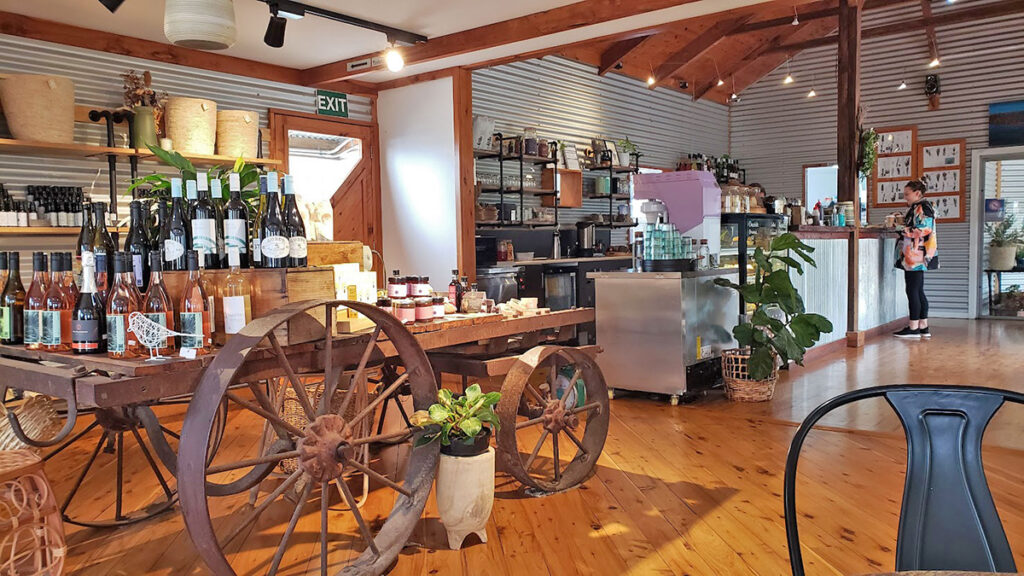
After lunch we headed into the town of Kingscote to go grocery shopping. We needed to get enough food for the 4 days we’d be on the island because it was nearly an hour drive to any real stores from where we would be staying in Vivonne Bay. Here’s the photo of Vivonne Bay’s General Store (the only store within hour drive). It looks big enough, but inside the shelves are almost empty. And their refrigerated section literally had one apple, one bag of carrots and a couple of other items. I would have taken a photo inside but I didn’t want to insult the owner.
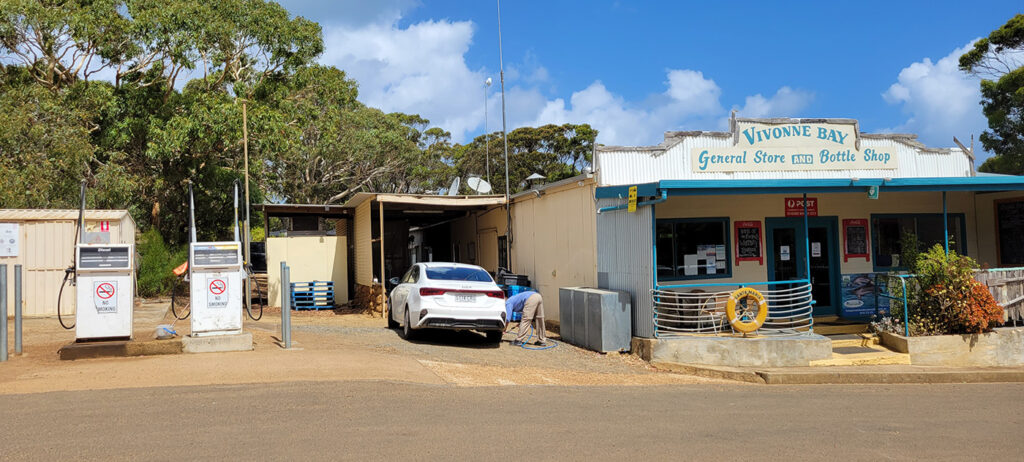
Once you drive a little past the general store, the rest of Vivonne Bay was just dirt roads. The directions were confusing and the homes were mostly tucked in behind the bushes and trees, so it took us quite a while to find our rental. Eventually I got out of the car and walked around until I found a house that matched the photo on Airbnb.
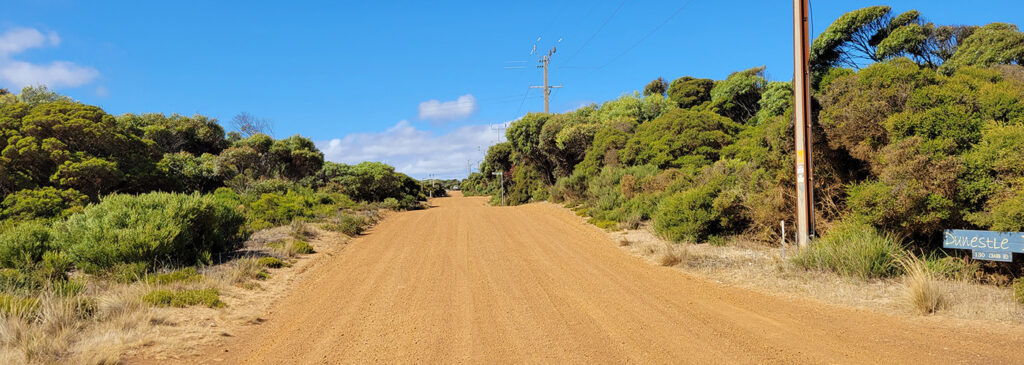
We were exhausted after having woken up at 3am to make our flight out of Melbourne, so we mainly just chilled the rest of the day as the wind and rain started picking up. We had read that the weather the next day was supposed to be even worse so we decided we would just take that day off and catch up on our rest. And the weather that next day was crazy! It was windier than any of the tropical storm winds we had recently experienced back in Florida. And the rain would come and go in a matter of seconds. Early that afternoon I decided that if the weather stayed reasonably nice for 30 minutes straight, I would go down and check out the local beach which was less than a 10 minute walk away. Eventually my wish came true and it had been somewhat calm and sunny for over 30 minutes. So we ventured out on foot, but as soon as we stepped onto the beach sand it began to sprinkle, and by the time we climbed back up the stairs to the road it was pouring! I brought my poncho, but Mark got drenched!
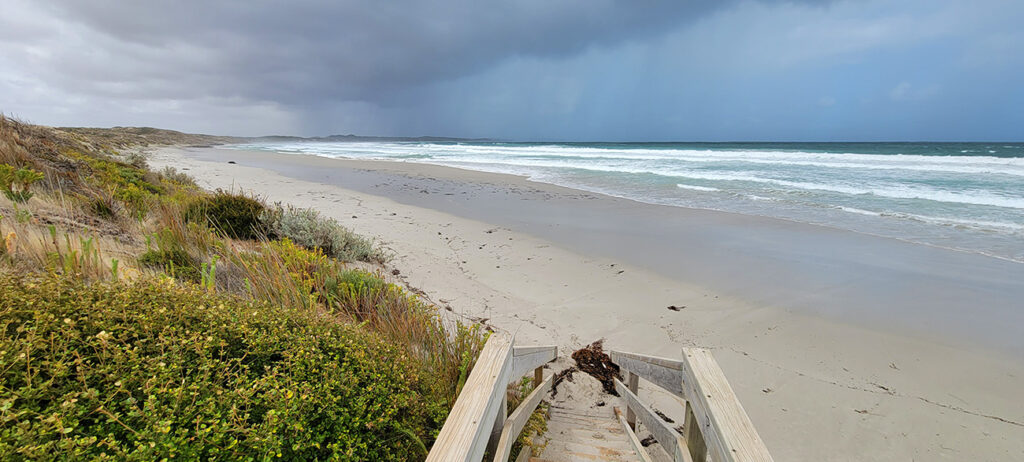
The weather was looking a little better again that afternoon so we tried to go to the beach again. To be safe we drove that time. But alas, as soon as we got out of the car it started raining. That evening the weather was beautiful out on our deck and Mark spotted our first wallaby in our yard just below the deck. And the next morning we saw more of them from our kitchen window.
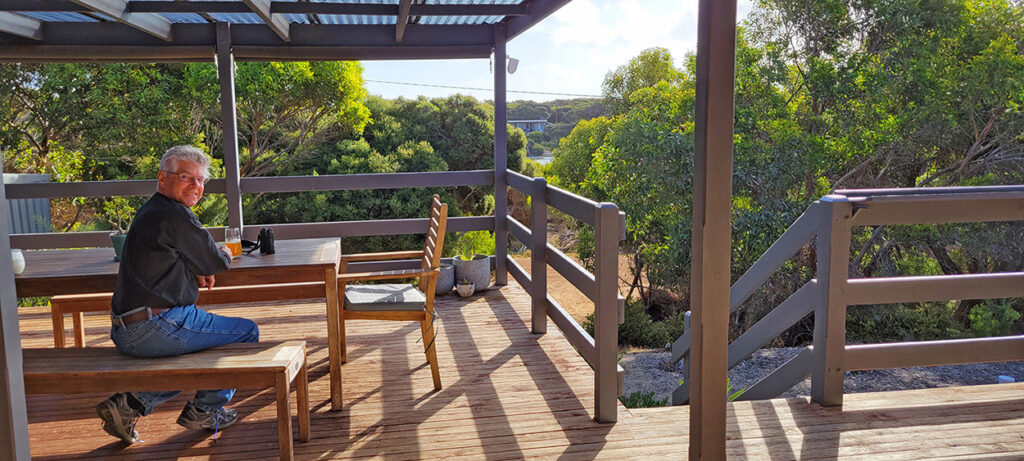
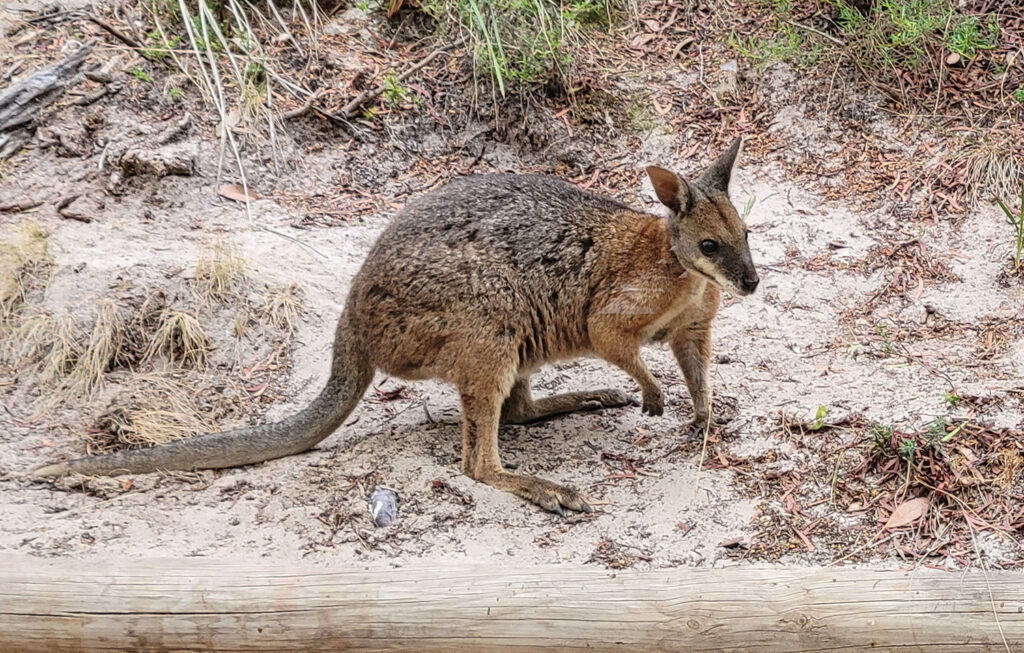
The weather was predicted to be better that next day and thankfully it was. We drove to Flinders Chase National Park on the west side of the island. Many portions of the park were still closed due to the devastating fires of early 2020, and a couple other areas of the park were recommended only for 4 wheel drive vehicles. But the two places in the park we were able to visit were spectacular!
The first walk we did was at Admiral’s Arch. This is at the very southwest tip of Kangaroo Island where you can see over the cliffs to the coast in three directions. What made this place extra special was all of the fur seals and sea lions on the rocks below us.
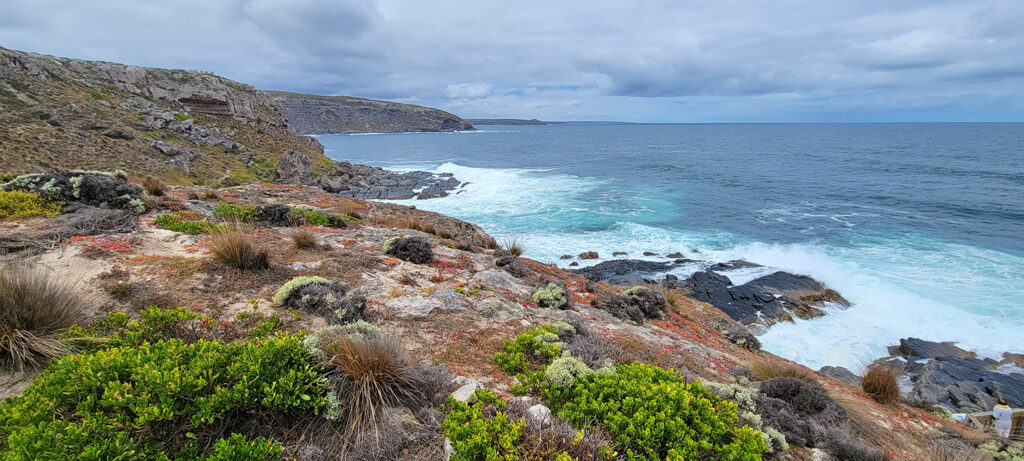
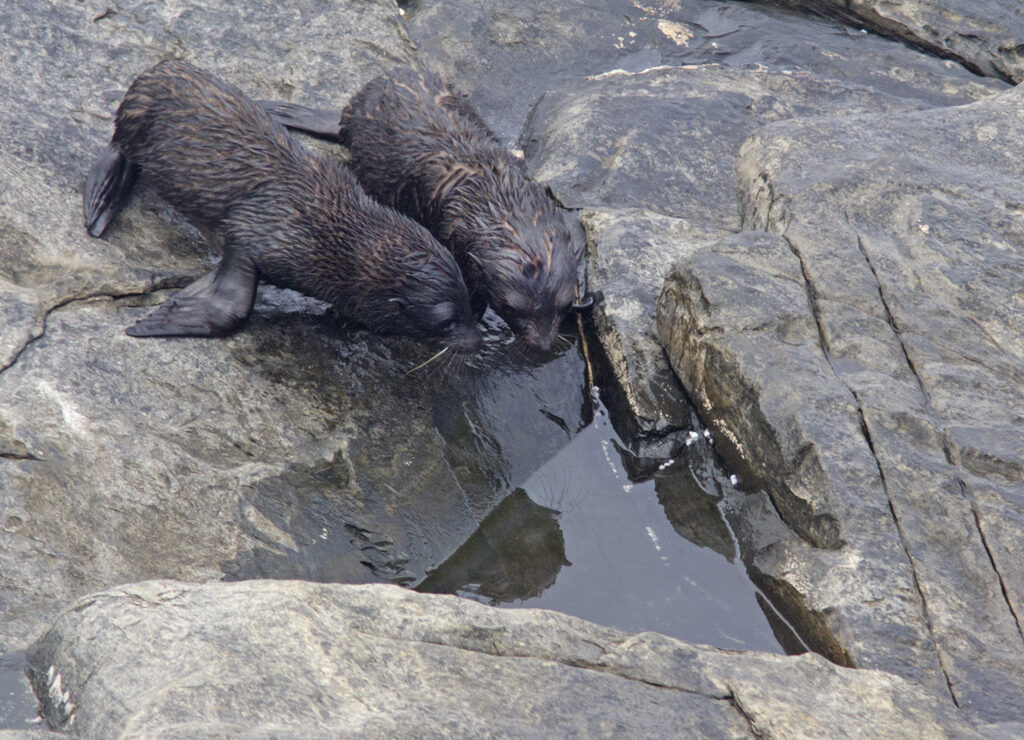
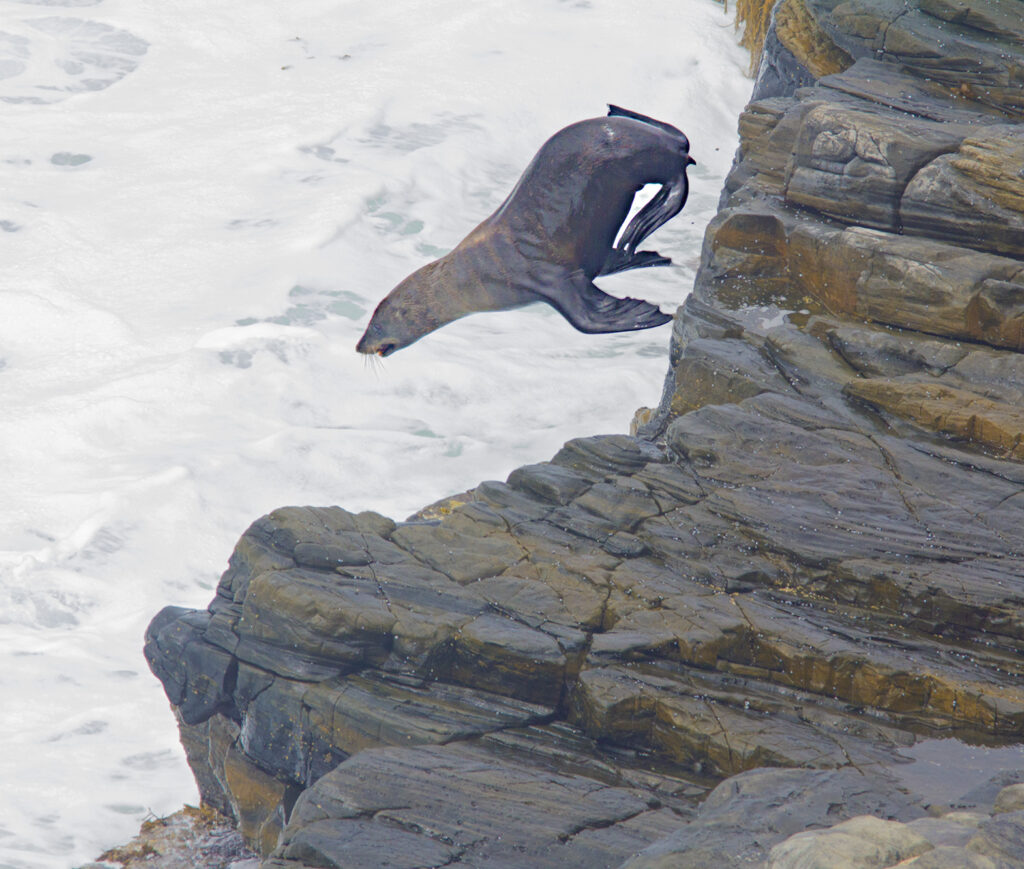
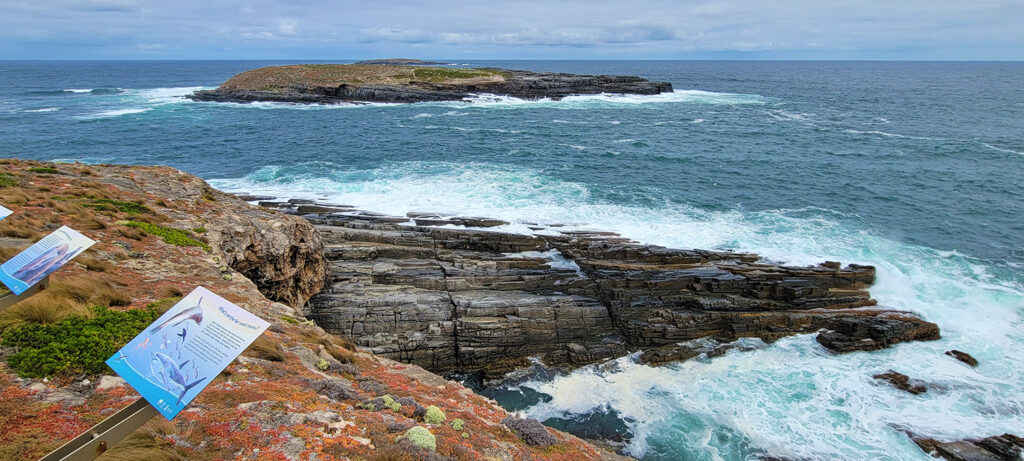
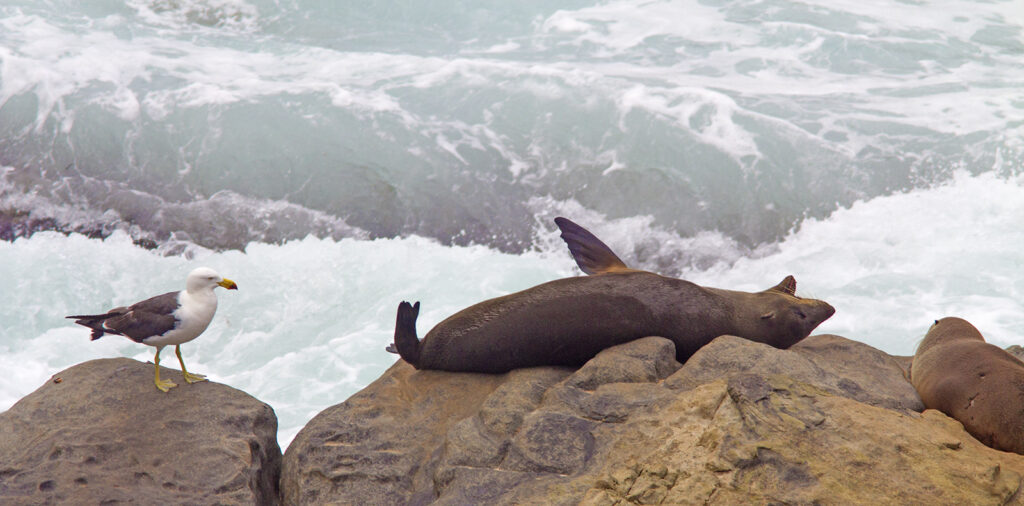
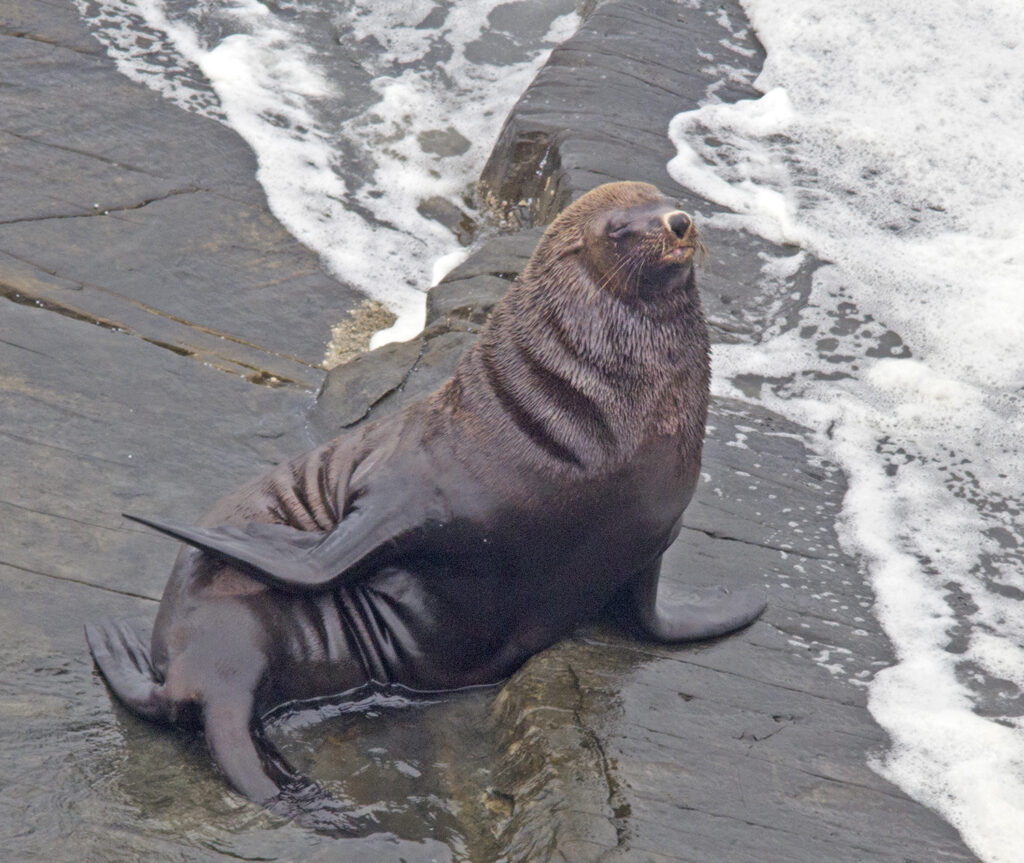
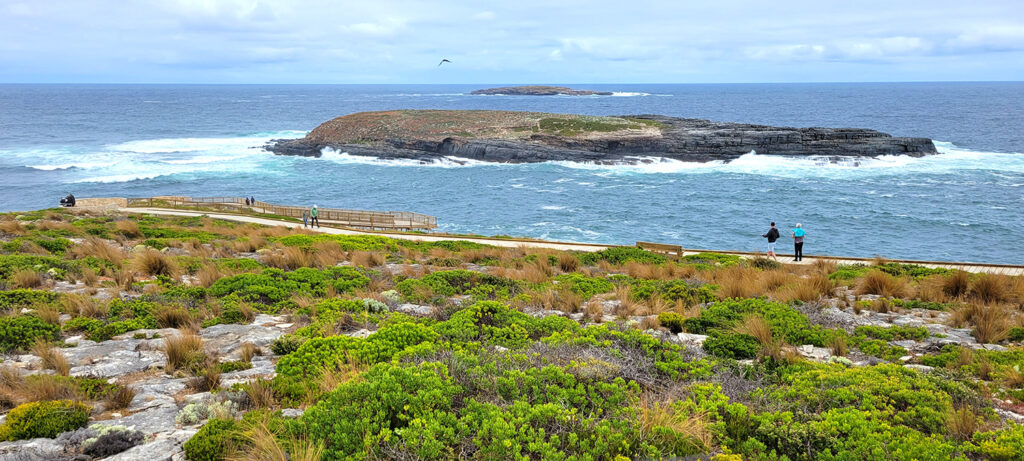
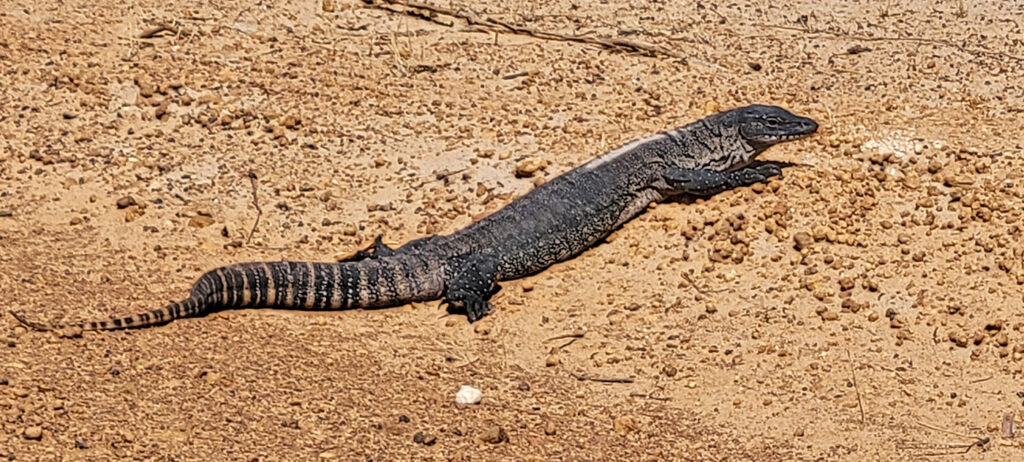
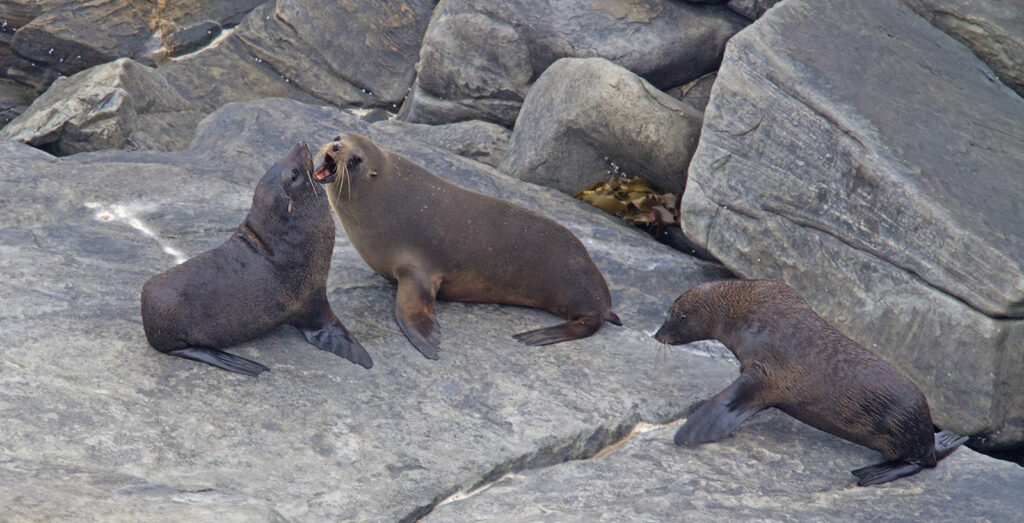
The caves that were carved into the rocks were also very cool to explore.
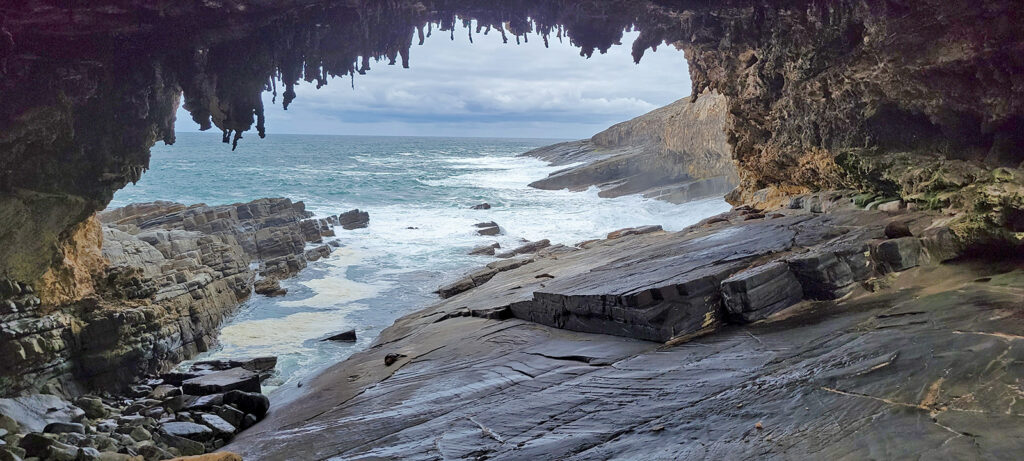
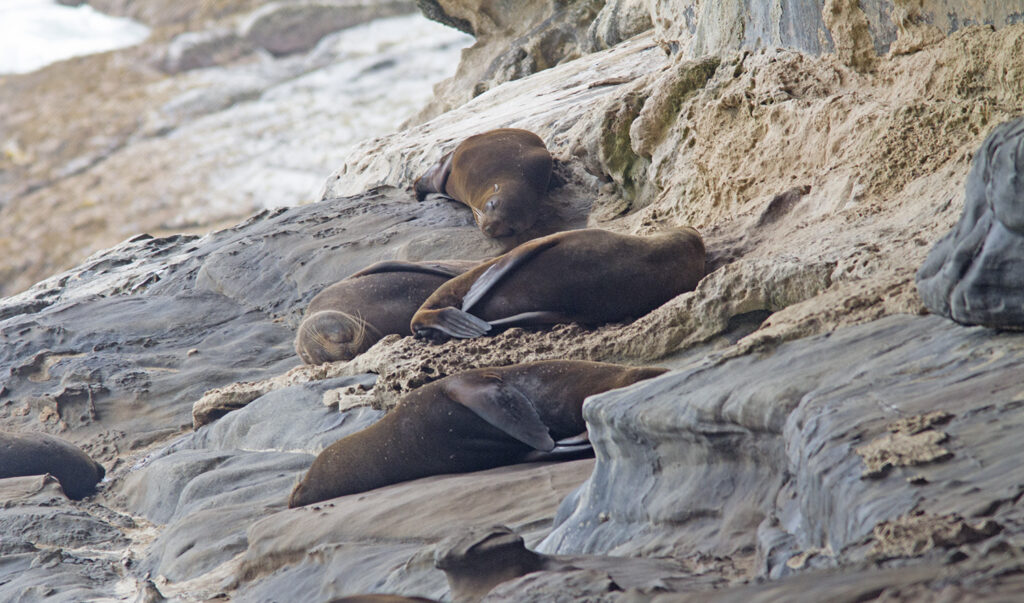

The second place we visited at Flinders Chase was the aptly named “Remarkable Rocks”. We had noticed these unusual rocks in the distance, but we didn’t realize that is where we were headed next.
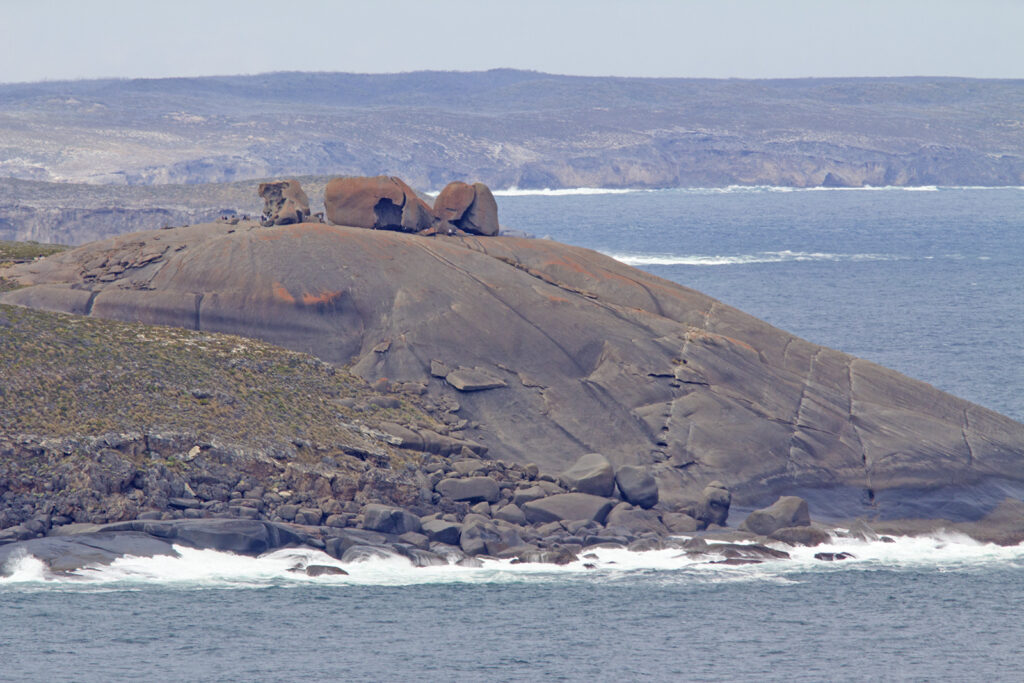
These strangely shaped rocks are made of granite and partially covered in orange lichen.
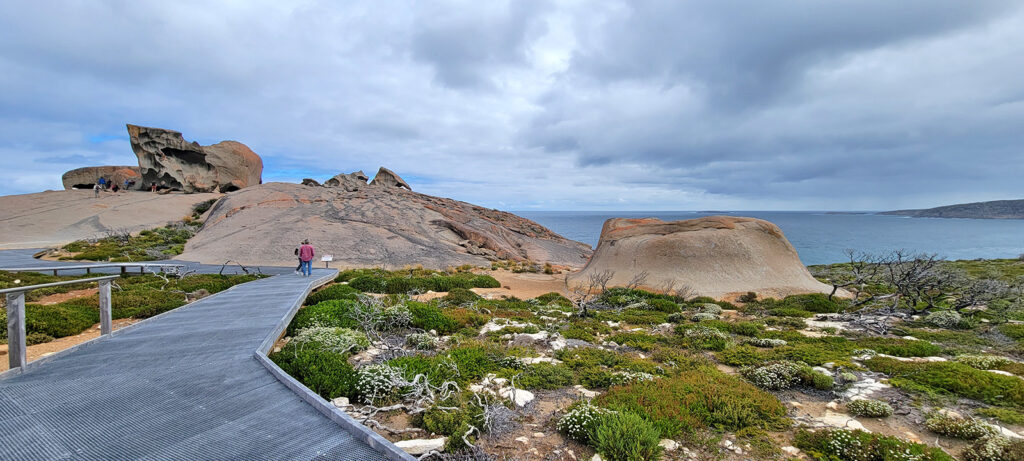
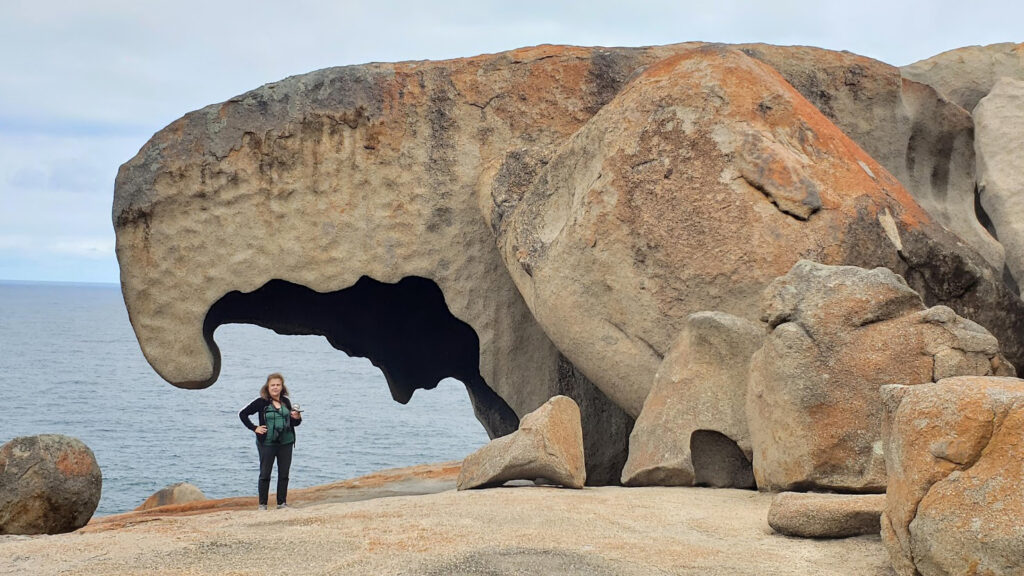
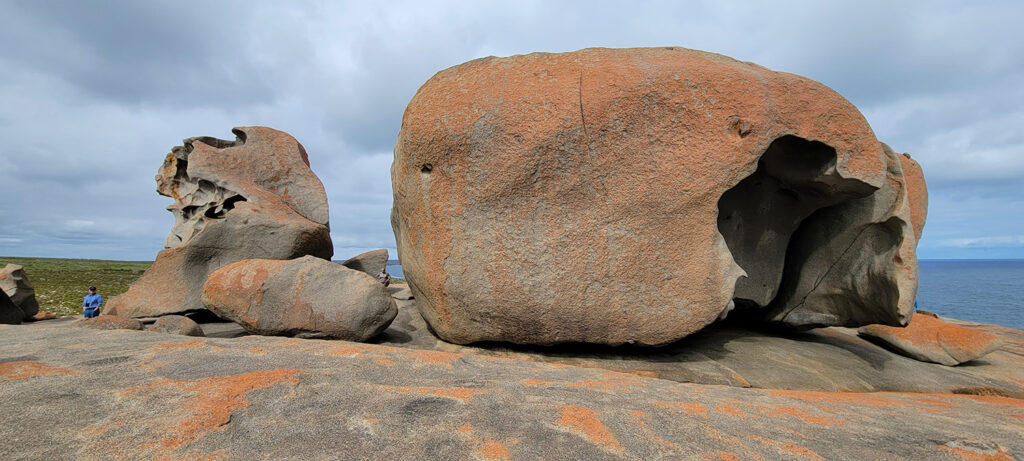
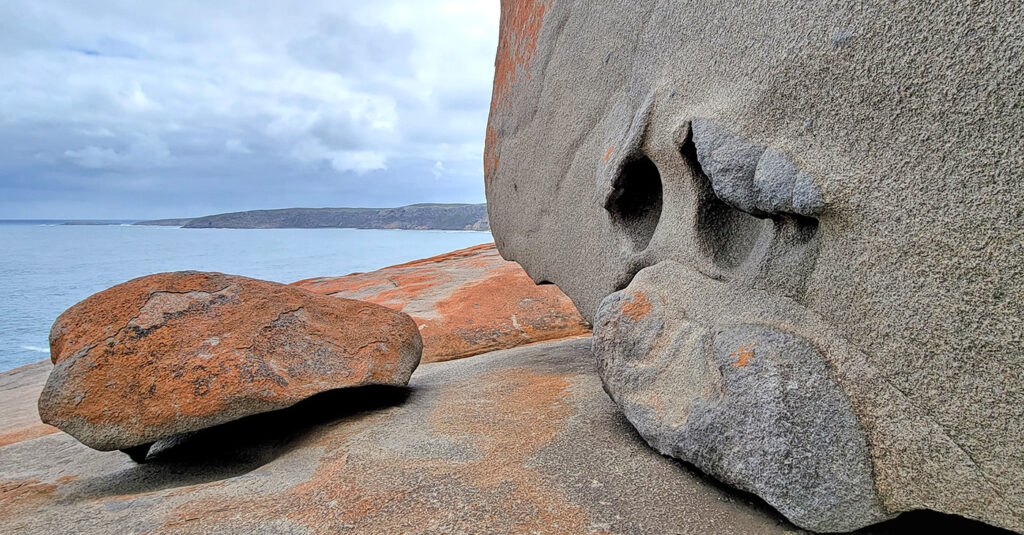
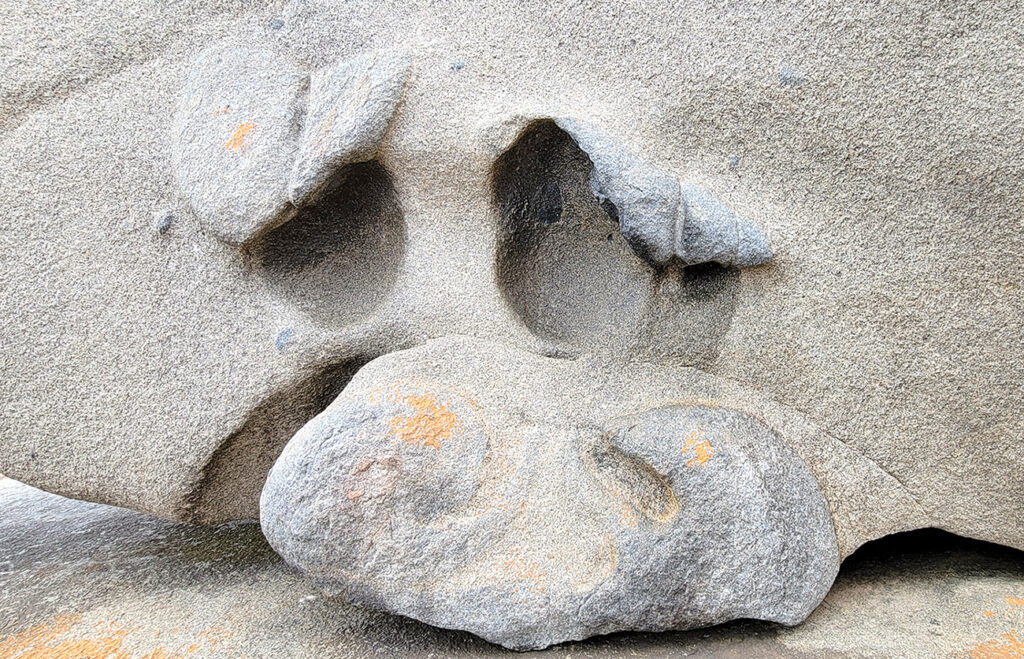
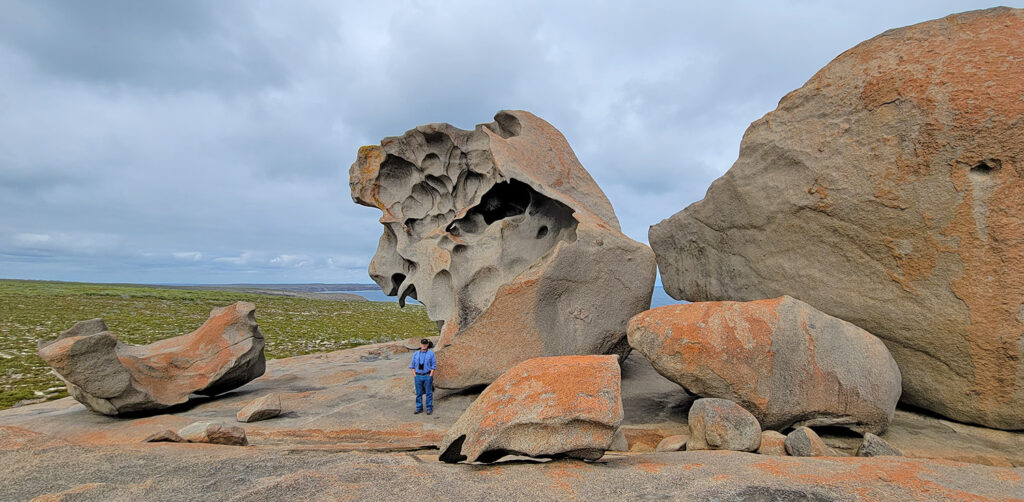
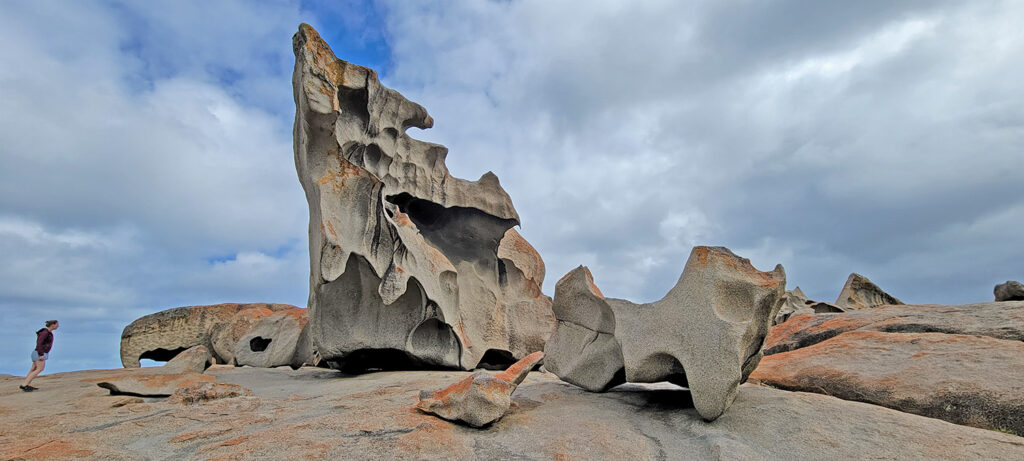
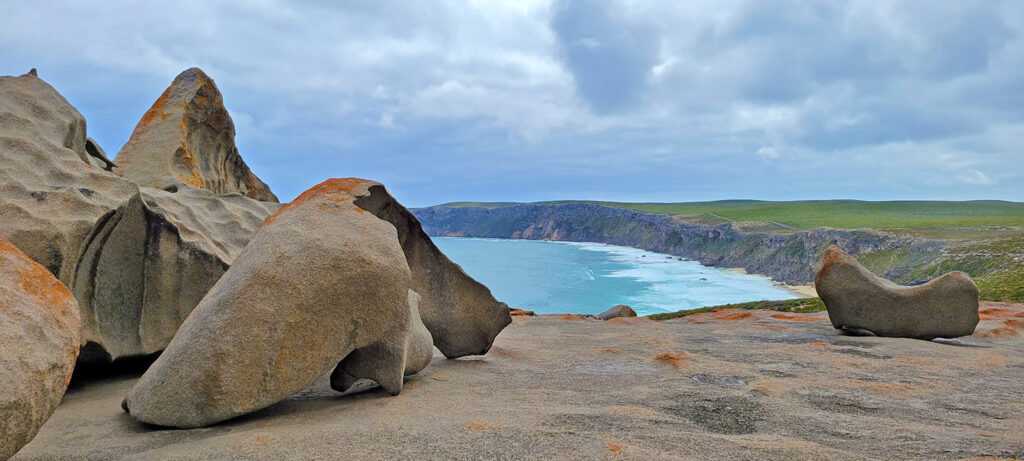
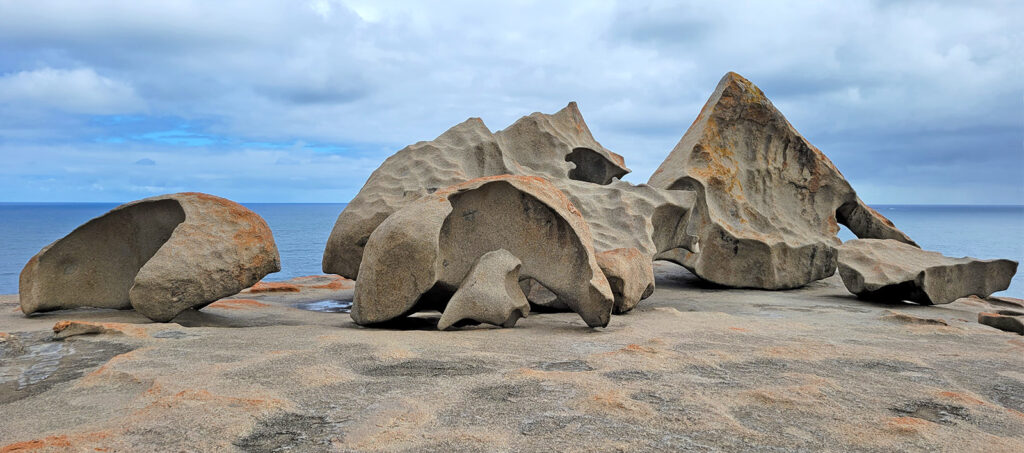
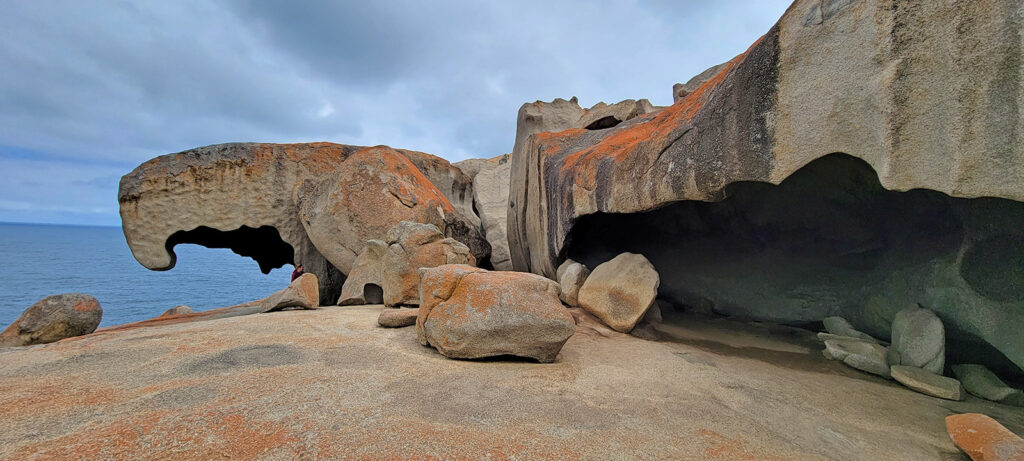
On our way home from Flinders Chase, we drove down a street that took us to the other side of Vivonne Bay which is separated from our house by the Harriet River. We walked on the pier.
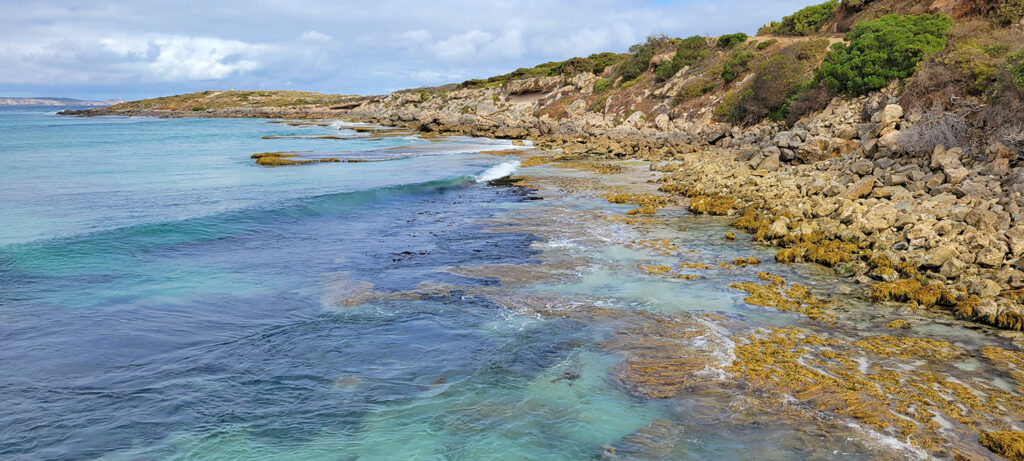
We drove a little farther down from the pier and found an overlook called Point Ellen and the Vivonne Bay Rock Pool where you could explore the pools in the rocks and watch the waves crashing. It was a great end to the day.
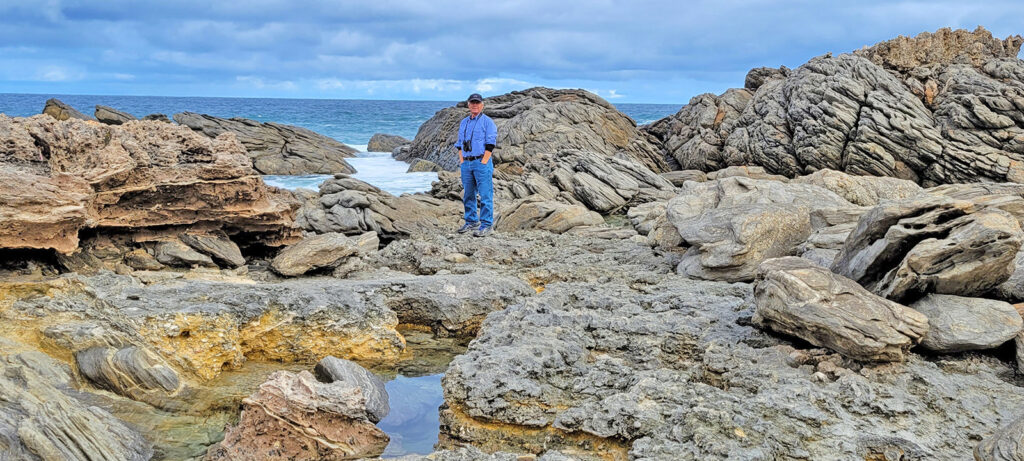
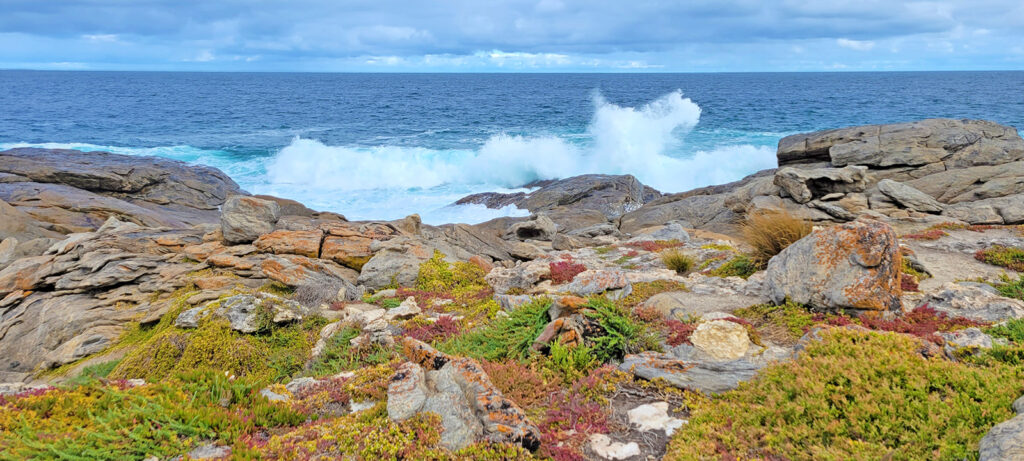
I would like to make a note here that in the 2 ½ days we were in our Airbnb at this point we had occasionally heard a strange noise that we joked might be a kangaroo, but we knew that was absurd. We decided the sound was likely coming from our neighbor’s cisterns which were just outside our living room wall. It appeared that every house in the area had three of these cisterns (or whatever they are called). These things were huge and attached to the gutters of the house. I really wanted to know how the water was being processed and what it was being used for. I don’t know the answer, so I tried not to drink too much water from the faucets in the house.
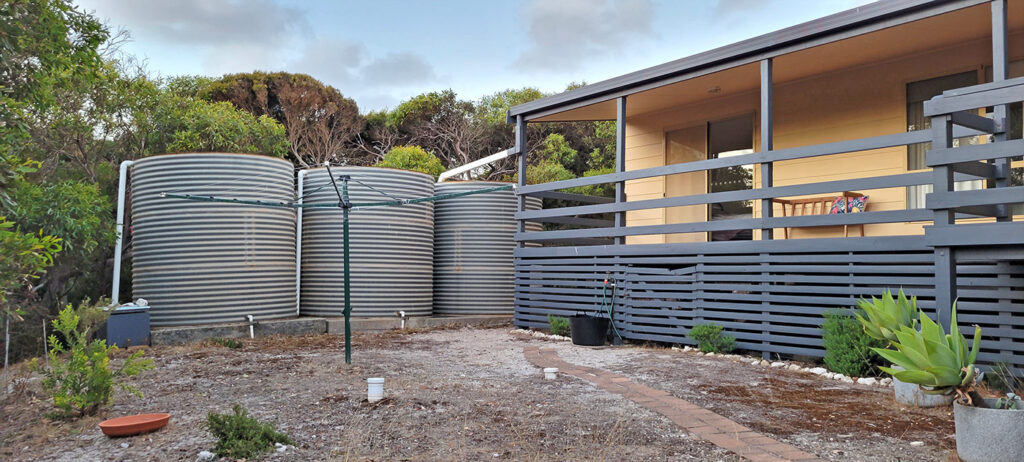
On our last day on the island we thought about driving an hour+ to Penneshaw which is the touristy area of the island that includes several attractions, but instead we opted for a tour of a nearby private wildlife reserve called “Hanson Bay Wildlife Sanctuary”. Prior to the fires it was open to the public in addition to offering private tours, but for now you could only visit if you booked a tour or were staying at one of their cabins that survived the fire. Our guide, Peter, was an interesting character who lived on the property in a rustic cabin and had to use a long drop (that’s Aussie for outhouse) at night. He was telling us about this because he said that a tiger snake had been living in the area between his cabin and the long drop, and he had to be very careful going out at night because the tiger snake is the 7th most venomous snake in the world. During the tour we happened across Peter’s snake, but lucky for us, although these snakes are deadly, they are very docile.

The main purposes of this tour were to spot wildlife (especially koalas), learn about them and the local vegetation, and to learn about the fires and how they affected the area. We were lucky enough to spot a lot of koalas and kangaroos on the tour. I love the fuzzy ears on the Koalas.
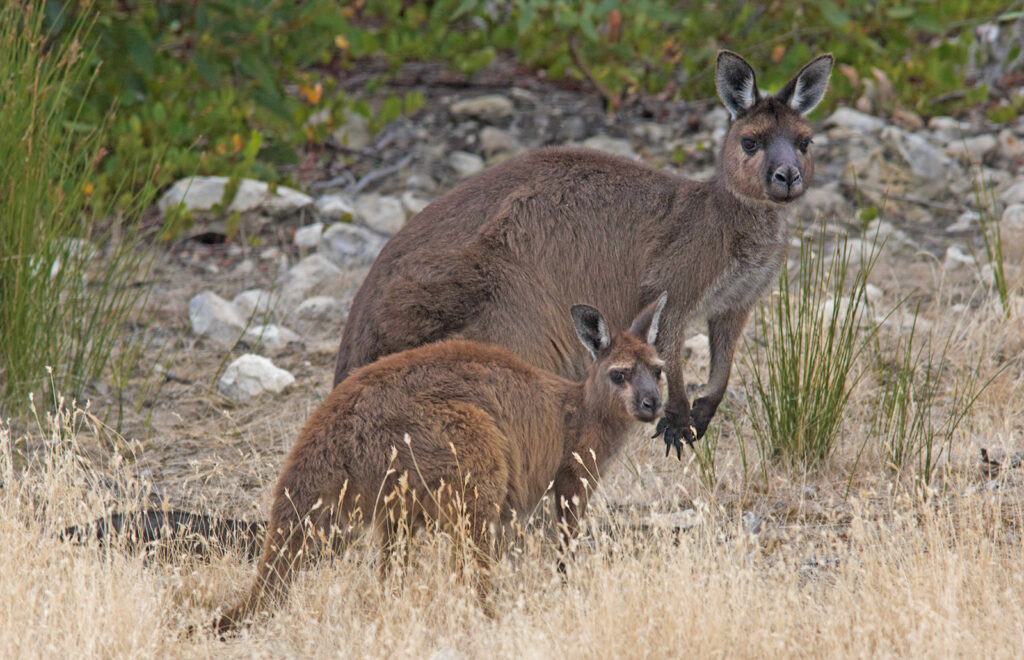
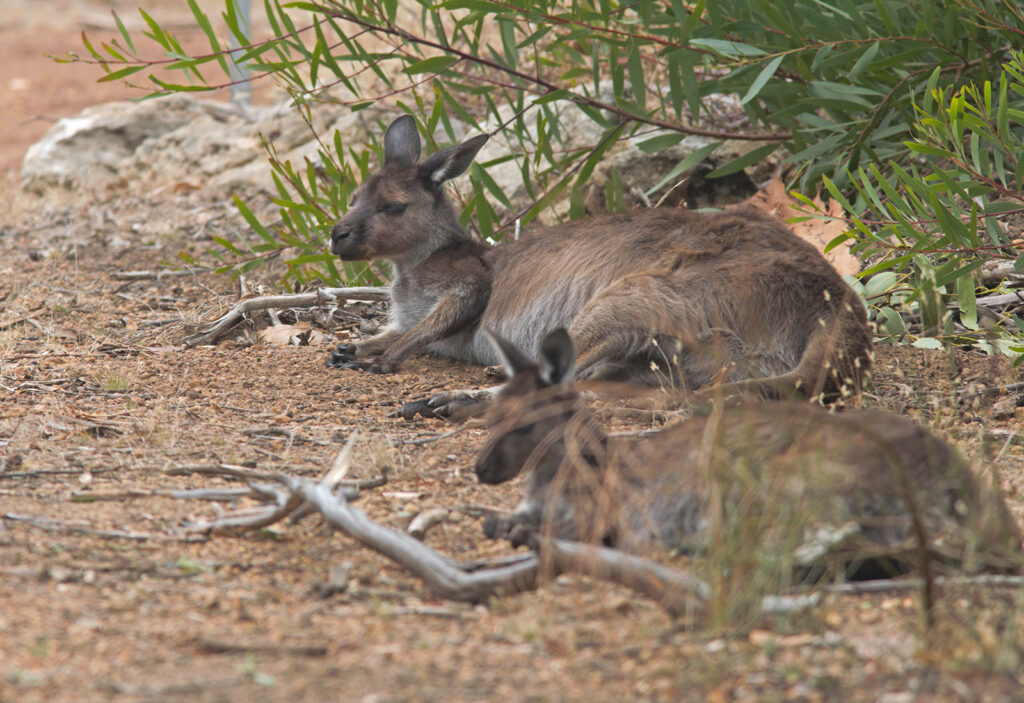
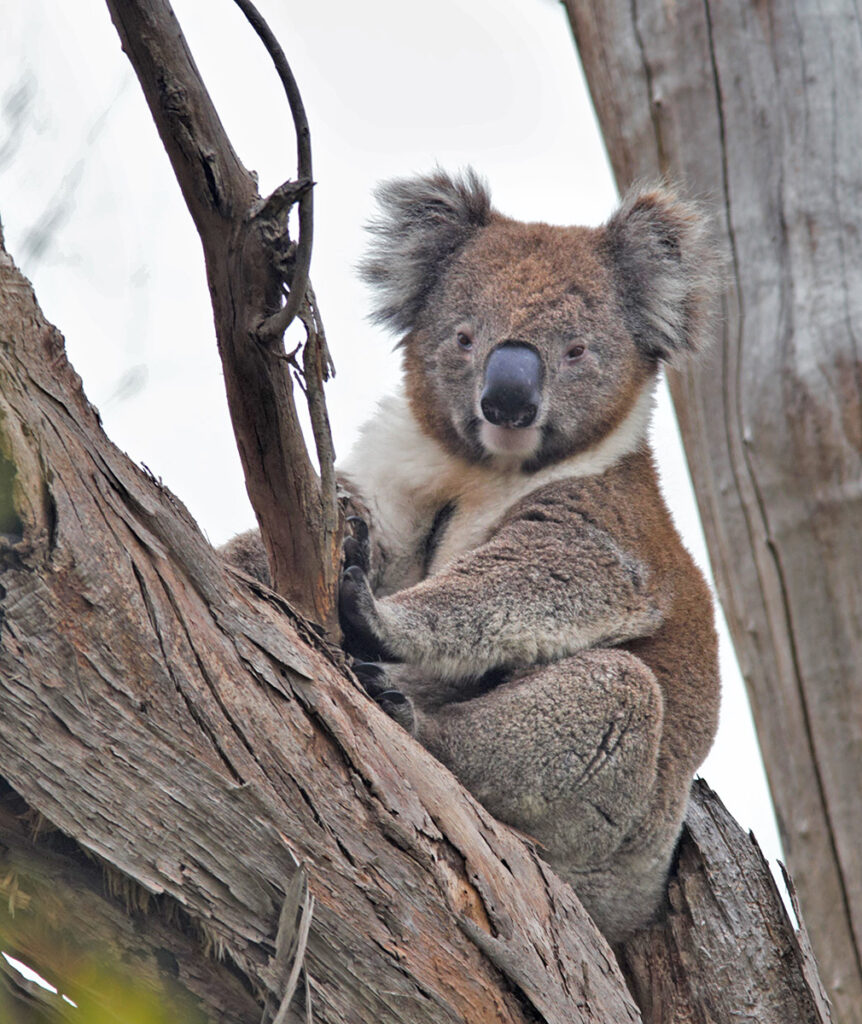
Peter was telling us that it was mating season for the koalas and that the males make a sound/growl that you would never believe came out of a cuddly-looking koala. At that moment the lightbulb came on for me and Mark. Perhaps that strange sound that we had been hearing at the house was a male koala? And then right on cue, a nearby male koala started growling. It was that sound all right! Be sure to have your sound turned on when you watch the video. (Video compliments of the Taronga Zoo in Sydney.)
Later that evening I was lying on the couch and from there I could see a big koala in the tree in our backyard. I guess he was the one making all the noise!
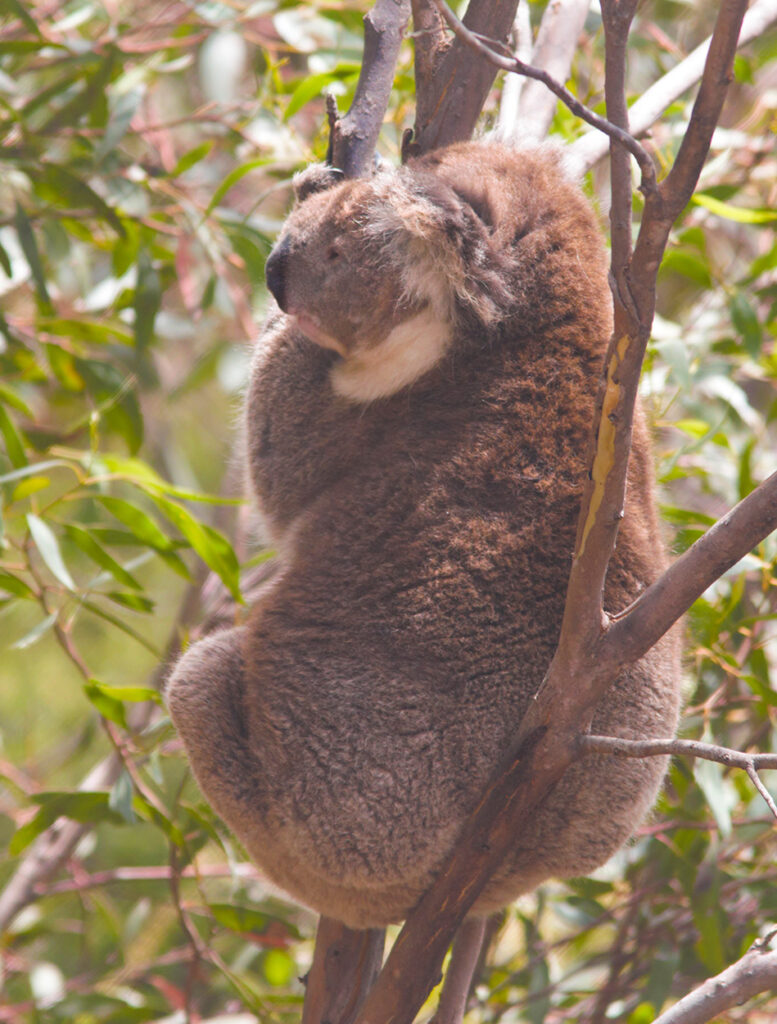
After resting for a couple of hours we decided to take one last shot at exploring our beach. It was low tide and I held out hope that possibly I would find a shell or two despite not seeing any on our previous two brief beach experiences. We walked down the beach toward the outlet to the Harriet River. It wasn’t too exciting since the water wasn’t actually flowing out or in. Perhaps it only flows at high tide or when there is a significant amount of rain.
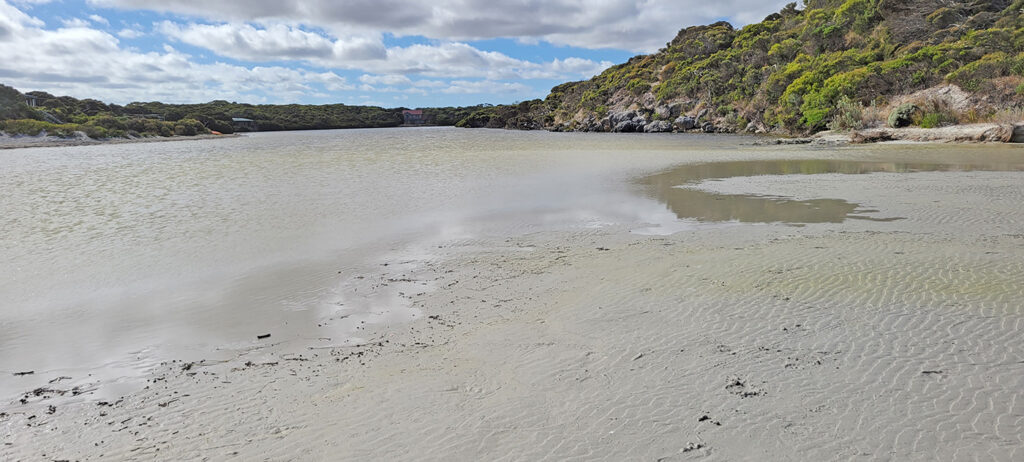
Then we walked back the other way toward some rocks. There were lots of piles of interesting seaweed including some pink seaweed. There were no shells, other than a few broken pieces, but there were these strange things of various sizes that felt just like dense styrofoam. We later learned that these things were the ”bone” of Giant Cuttlefish.
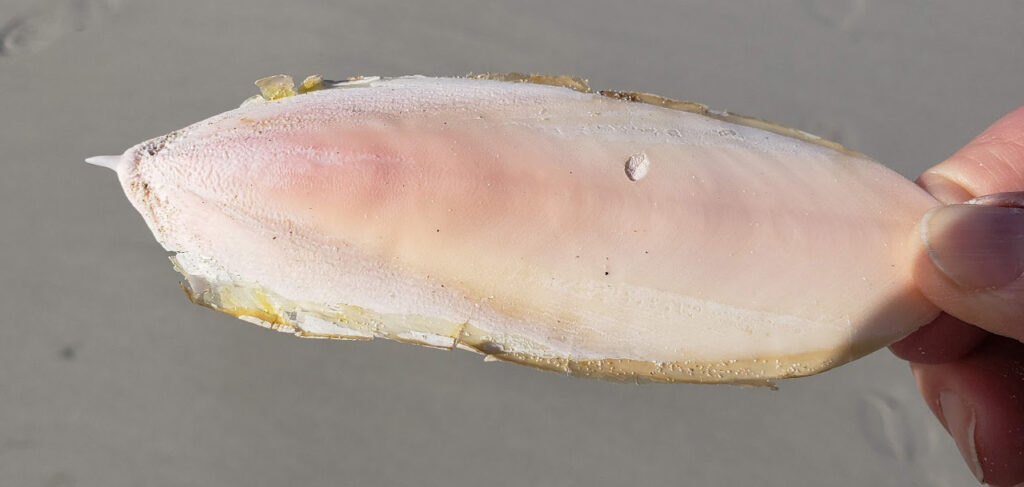
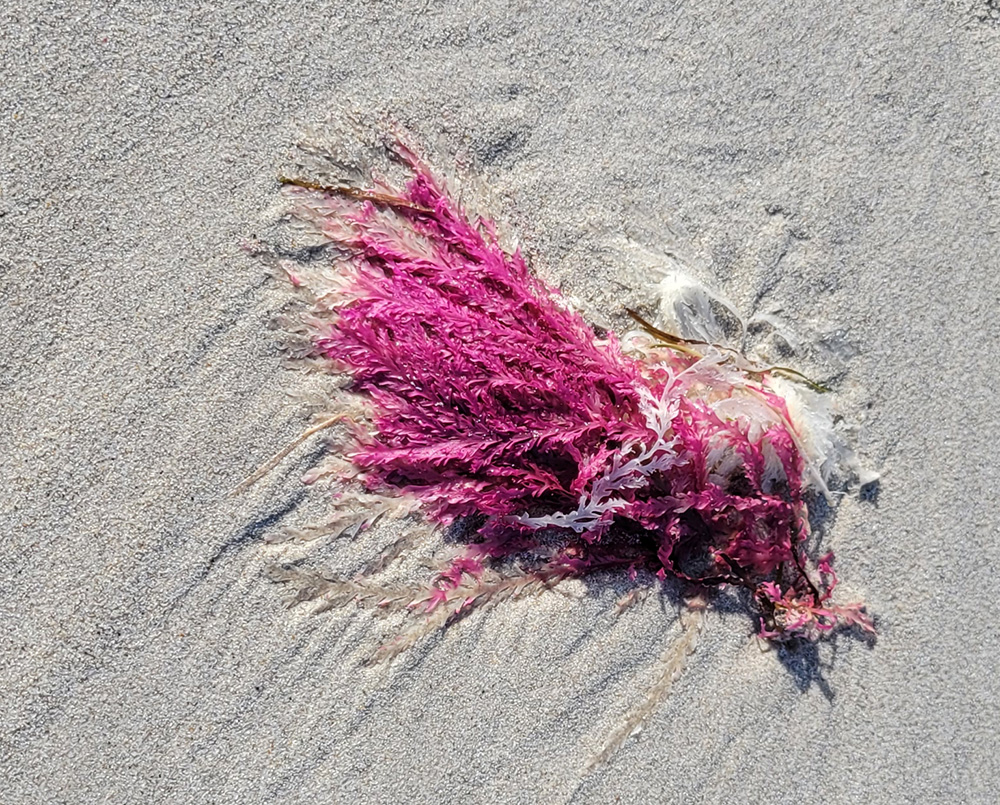
After a short walk, we arrived at the rocky area of the beach which was very scenic. But more importantly, those rocks were hiding a jackpot of shells!
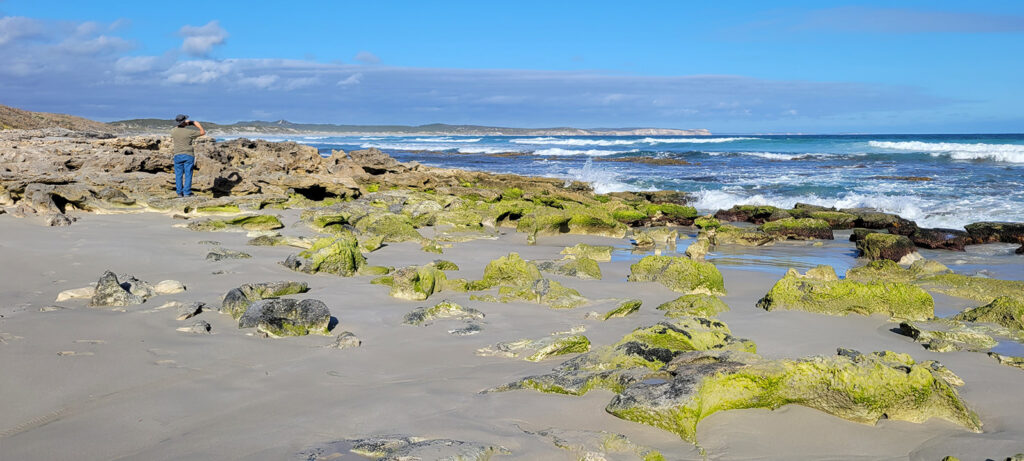
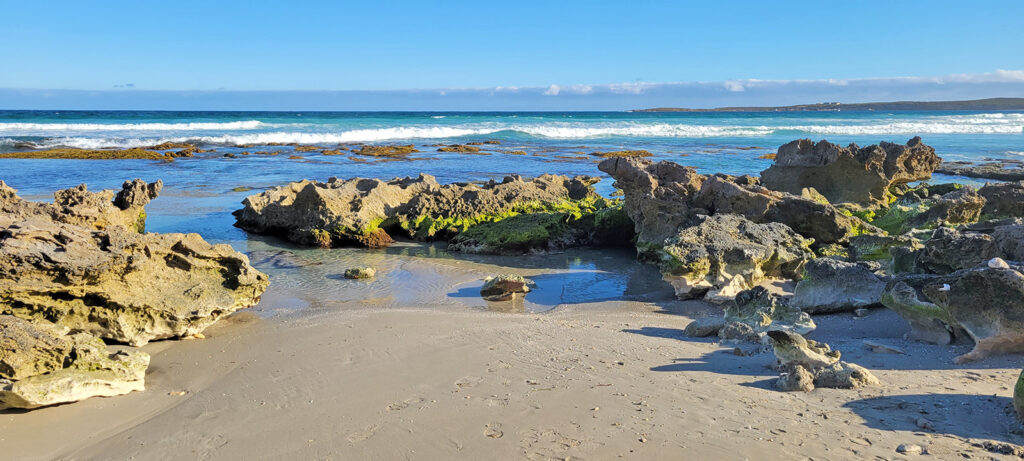
Mark and I found quite a few shells, but here is a photo of a few of my favorites after I boiled them to make sure they were clean and safe enough to smuggle (ooops, I mean “bring”) into the country.
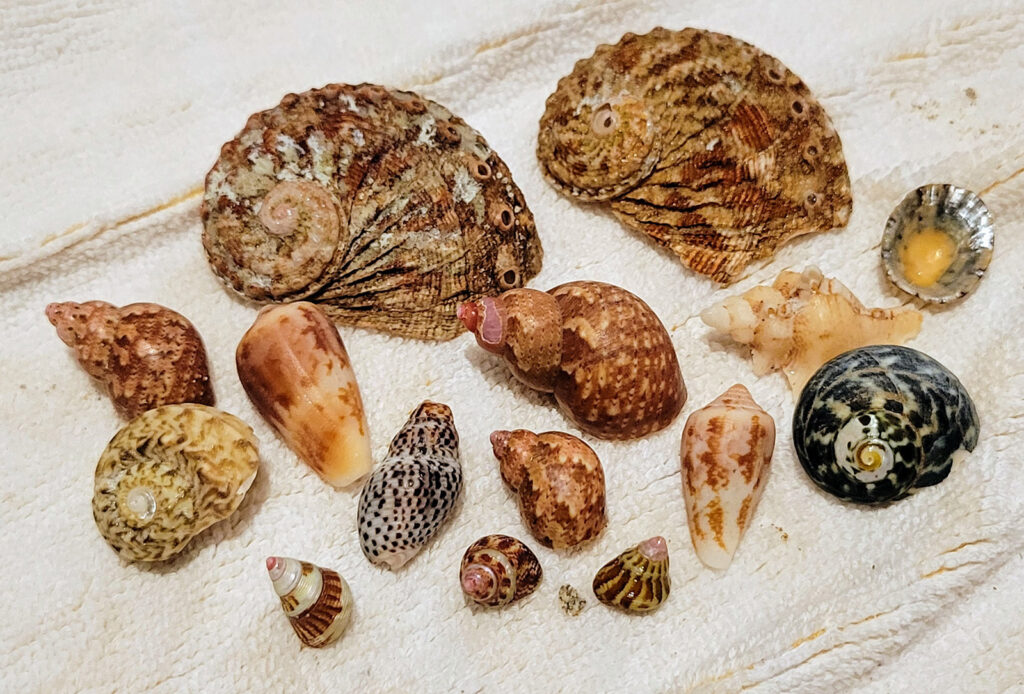
Finding those shells was a great way to end our visit to Kangaroo Island. We were both really glad we stayed on the island – it was a totally different experience from our other stops around Australia. The next morning we flew to our next destination – Sydney!
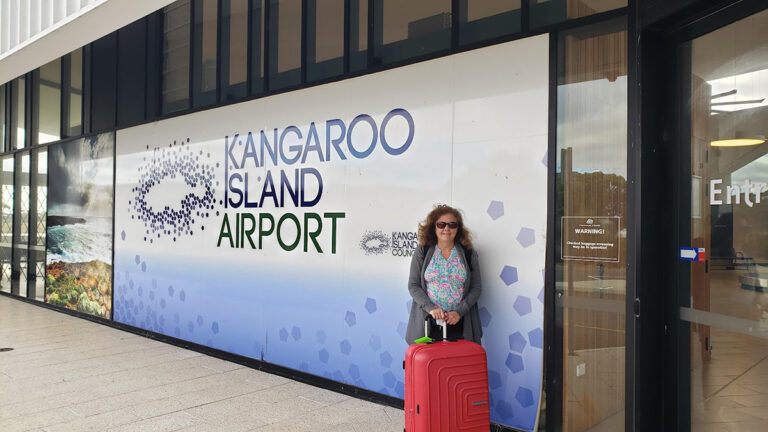
Kangaroo Island & Koalas
Koala’s were originally only on the mainland of Australia but about 100 years ago they were introduced to Kangaroo Island in order to protect the species. (Someone had the foresight to realize that the Koala’s habitat was shrinking in Australia as the human population was expanding.) By the time the devastating fires hit Kangaroo Island in late 2019/early 2020 there were approximately 80,000 koalas on the island which was considered to be an extreme overpopulation. (Scientists later determined that the island could only sustain about 30,000.) There was a risk of koalas starving because they had over-foraged the eucalyptus trees. During that time, female koalas were being rounded up and sterilized to try to solve the problem. After the fires only about 8,000 to 10,000 koalas remained.
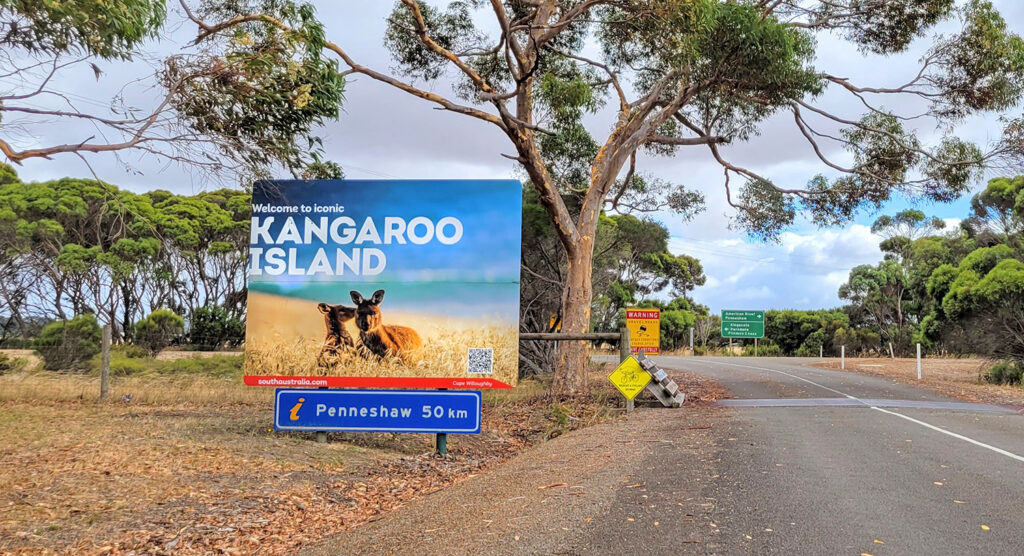
2 thoughts on “Kangaroo Island on Our Own”
‘ini, you said that Kangaroo Island was the best part of your trip to Australia and I can see why. The koalas are very adorable – yes, those fuzzy ears! Being on your own in a place like this is so special. Onward to your other posts. I’ll let you know if anything tops this!
Pingback: A Little Bit of Sydney - Travel Sage